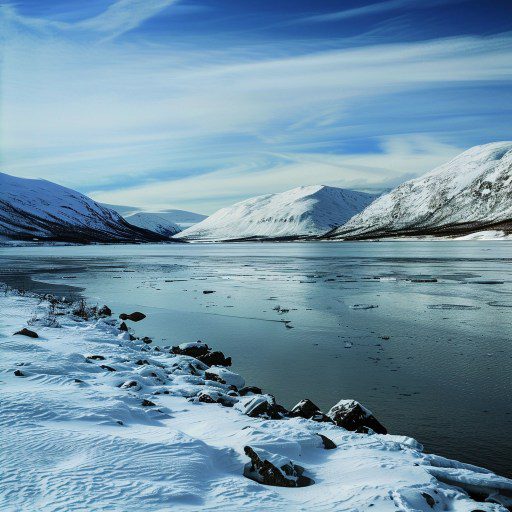The Arctic may face sea ice-free summers much sooner than expected, according to a new study from the University of Colorado at Boulder that I link to you here. The results, published in the journal Nature Reviews Earth & Environment, suggest that the first ice-free day in the Arctic could occur within the decade. That's more than 10 years earlier than previous projections.
Arctic, disconcerting future
It almost sounds like a disaster movie plot, but unfortunately it's the reality: the Arctic is losing its ice at a disconcerting rate. According to the study, by mid-century, the region could see an entire month without floating ice in September, when sea ice cover is at its lowest. And it doesn't end there: at the end of the century, the ice-free season could last several months a year, depending on emission scenarios.
In a high-emissions, or “business as usual” scenario, the planet's northernmost region could become consistently ice-free even in some winter months. Yes, you read that right: no more ice, not even in the middle of winter.
When the Arctic becomes ice-free
But what do scientists mean when they talk about an “ice-free” Arctic? It doesn't mean there won't be even one ice cube floating in the ocean. Instead, researchers consider the Arctic ice-free when the ocean has less than 1 million square kilometers of ice. This threshold represents less than 20% of what was the seasonal minimum ice cover in the 80s.
In recent years, the Arctic Ocean had about 3,3 million square kilometers of sea ice area at its September minimum. But we are also about to say goodbye to this miserable remnant of ice.

Ice in the Arctic, a dramatic countdown
Alexandra Jahn, associate professor of atmospheric and oceanic sciences at CU Boulder, analyzed existing literature and climate model data on ice cover. What she found is alarming to say the least: The first day that sea ice cover drops below the 1 square kilometer threshold would occur on average four years earlier than monthly averages, but could occur up to 18 years earlier.
In other words, we are racing towards an ice-free Arctic at breakneck speed. The hardest impact? The one about animals that depend on ice for survival, such as seals and polar bears.
But they are not the only ones at risk
Communities living near the coastal region are also in danger. Sea ice plays a critical role in mitigating the impacts of ocean waves on coastal land. As the ice retreats, ocean waves would become larger, causing coastal erosion.
Can it still be avoided? According to Professor Jahn, no. An ice-free Arctic is now inevitable, she says. Future emissions levels can still change a lot, though, still determining how often these conditions will occur.
In an intermediate emissions scenario, (similar to our current path), the Arctic could become ice-free only during late summer and early autumn, from August to October. But under the highest emissions scenario, the Arctic could be ice-free for as many as nine months by the end of this century. A nightmare future.
Ice-free Arctic: if you look for it, there is good news
I'll throw it out there without thinking about it. There is some good news in all this: Arctic sea ice is resilient and can return quickly if the atmosphere cools. Unlike the ice sheet in Greenland, which took thousands of years to form, even if we were to melt all the Arctic sea ice, it could return within a decade if we could find a way to remove CO2 from the atmosphere.
Of course, this doesn't mean we can continue to emit greenhouse gases with impunity. On the contrary.
This study is a wake-up call that we cannot ignore
The Arctic is changing at a frightening rate, and the consequences will be felt far beyond the region's borders. It's time to act, to drastically reduce our emissions and to do everything we can to preserve the little ice that still remains there.
Because an ice-free Arctic is not only a tragedy for the animals and communities that depend on it, but a warning of what awaits us if we don't change course. The future of the Arctic, and our planet, is in our hands. It's up to us to decide whether we want a world of ice and wonder, or a blue and desolate desert.


